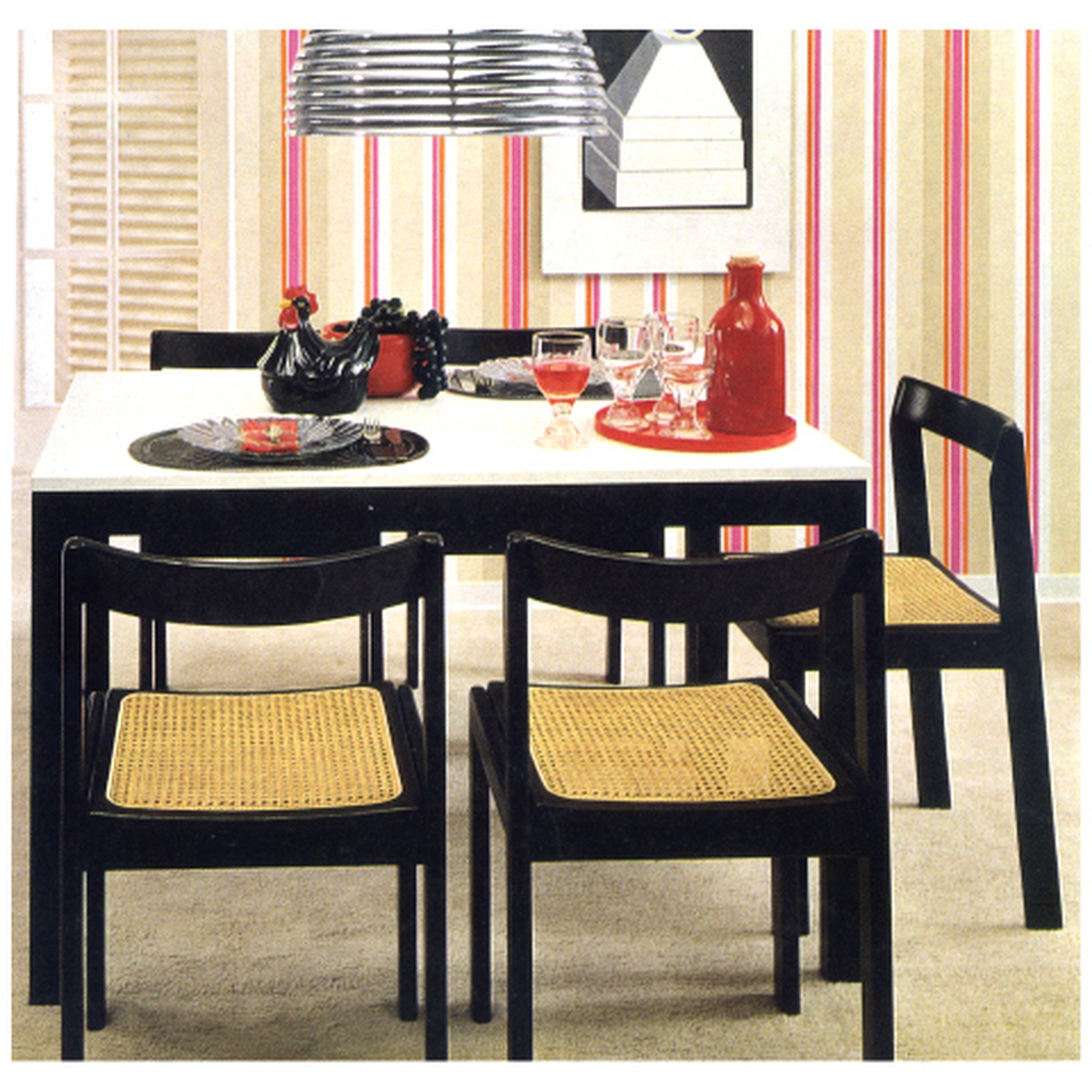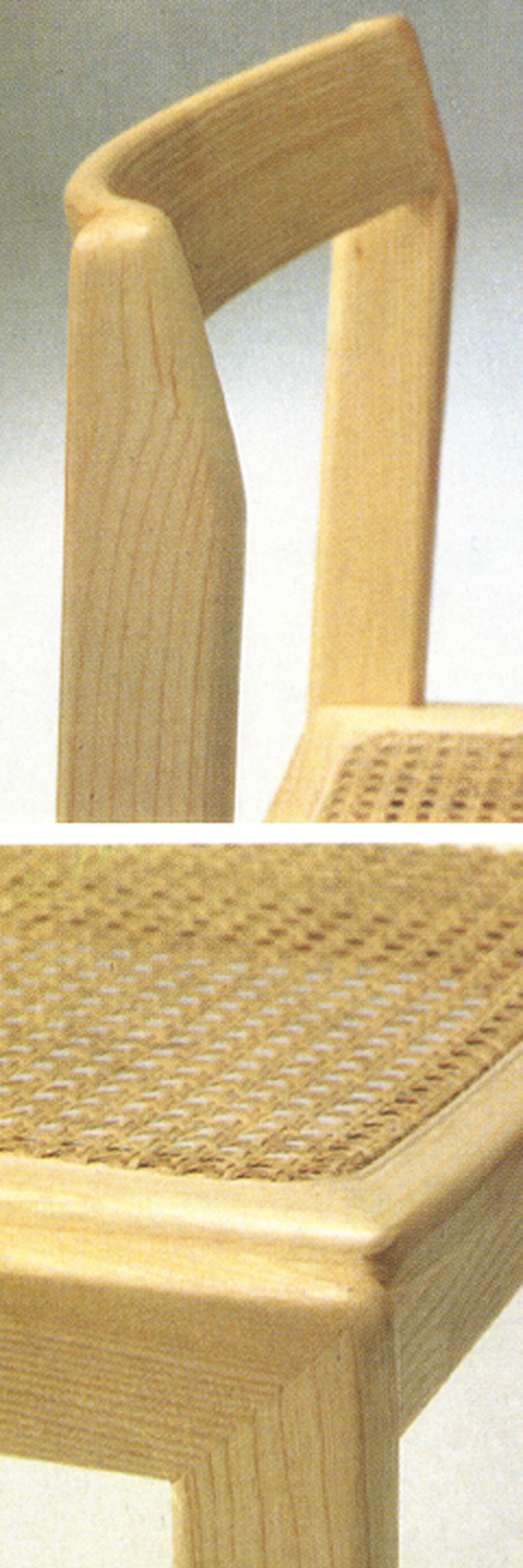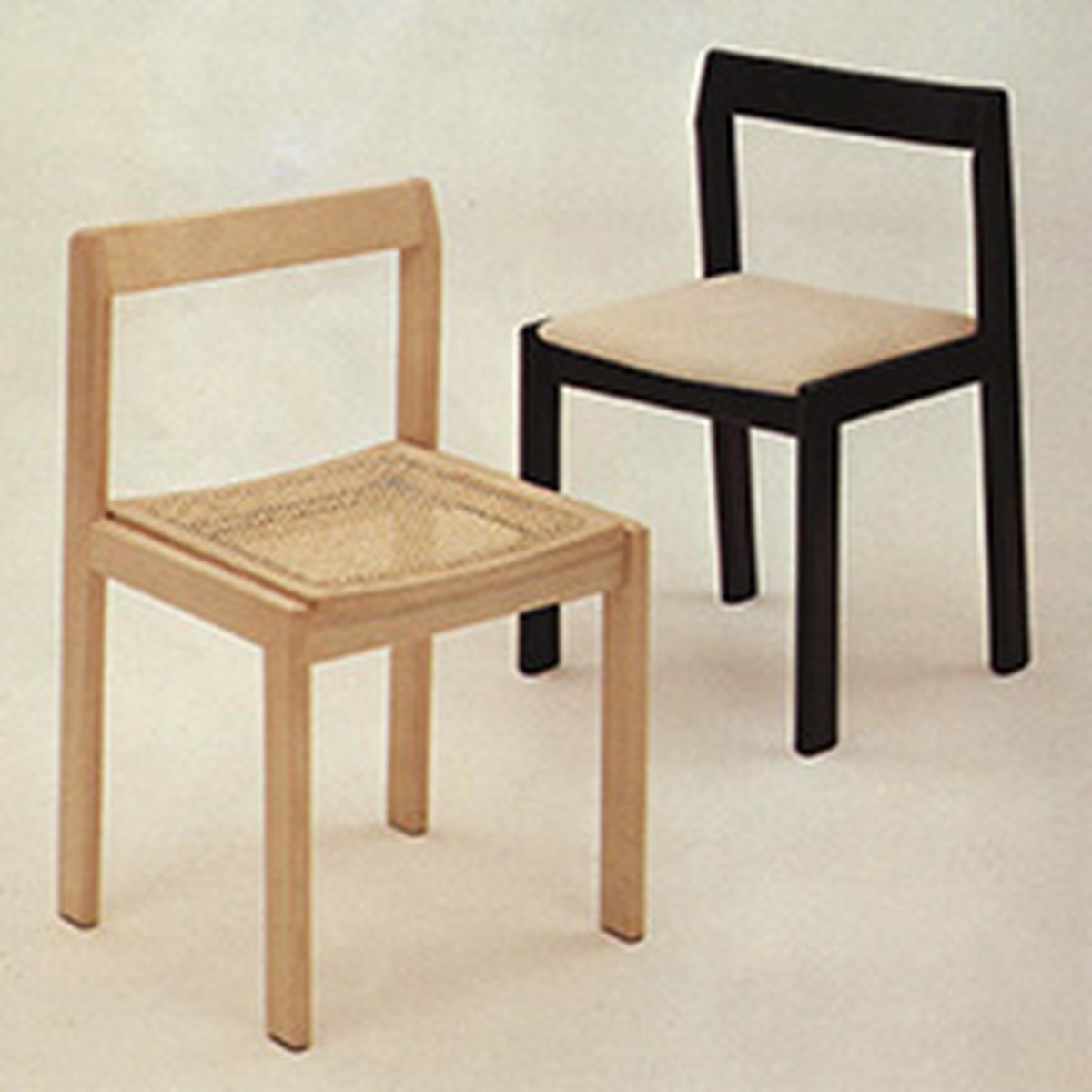Museo del Design del Friuli Venezia Giulia – Associazione di Promozione Sociale
P. IVA e CF 02863400301 – info@mudefri.it
"The designer's attentions are turned to solving the construction and structural problems, to pursuing the perfect inclination of the seat and backrest , to studying the joints and the intersections, the transport requirements and a truly stackable chair”*.
* Andrea Mi, Mauro Pasquinelli: tutti a sedere!, "Design & ...", Information Magazine
ADTOSCANA, Florence 1994
1970
Eva
Manufactured by Pallavisini
Beechwood or Ashtreewood chair with cane, glulam or upholstered seating.

Setting published in a Pallavisini’s catalogue, 1970
Thanks to Chair 101, designed by Alfredo Simonit, Pasquinelli gets in touch with Sandro Pallavisin. The Eve chair enters in production and in the new catalogue as well as the very admired chairs designed by Simonit, Mourgue, Salvati and Tresoldi.
And deservedly so, because Eva soon became a bestseller copied in Italy and abroad, soon to reaching a monthly production of 10,000 pieces.
Too much for a small company such as Pallavisini, which counted only 20 workers, forcing the company to outsource the production. The success reaches then from the neighboring Germany - where Eva is distributed by the German company Lubke KG (with peaks of 2,500 pieces per month).


The vertical supports of the Chair Eva, of flat and rounded section, are built in parallel the profile of the seat; the back has an harmonious and natural curve that helps to ensure a soft and gentle ensemble. Nevertheless a tension lives in the diagonal described by the rear legs, which pull back the base pushing the base of the backrest. A marked inclination that underlines the morphological perception of the chair in the third dimension.
In this photo you can see the inclination of the rear legs which gives particular originality to Eva chair.